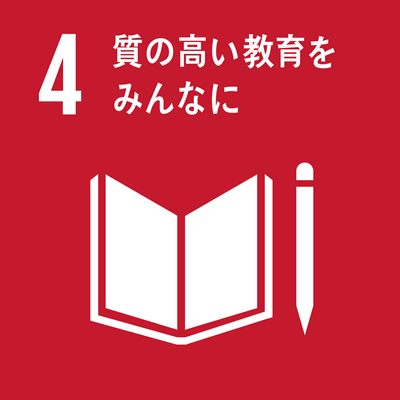シラバス表示
シラバスの詳細な内容を表示します。
→ 閉じる(シラバスの一覧にもどる)
科目の基本情報
| 開講年度 | 2024 年度 | |
|---|---|---|
| 開講区分 | 工学研究科(博士前期課程)電気電子工学専攻 | |
| 領域 | 主領域 : E | |
| 受講対象学生 |
大学院(修士課程・博士前期課程・専門職学位課程) : 1年次, 2年次 |
|
| 選択・必修 | 選択 |
|
| 授業科目名 | 量子エレクトロニクス特論 | |
| りょうしえれくとろにくすとくろん | ||
| Quantum Electronics | ||
| 単位数 | 2 単位 | |
| ナンバリングコード | ||
| 開放科目 | 非開放科目 | |
| 開講学期 |
後期 |
|
| 開講時間 |
金曜日 3, 4時限 |
|
| 授業形態 |
対面授業 * 状況により変更される可能性があるので定期的に確認して下さい
「オンライン授業」・・・オンライン会議ツール等を利用して実施する同時双方向型の授業 |
|
| 開講場所 | 11番教室 | |
| 担当教員 | 永井 滋一 | |
| NAGAI Shigekazu | ||
| SDGsの目標 |
|
|
| 連絡事項 | * 状況により変更される可能性があるので定期的に確認して下さい |
|
学修の目的と方法
| 授業の概要 | 本講義では,表面物理の基礎理論,および表面分析の要素技術である電子源,イオン源について学ぶ。また,表面分析における主要な技術である超高真空技術についても習得する。 (Course description/outline) In this lecture, you will learn the basic theory of surface physics and the electron and ion sources that are the elemental technologies of surface analysis. Students will also learn about ultra-high vacuum technology, a major technology in surface analysis. |
|---|---|
| 学修の目的 | 本講義の到達目標は,固体物理の発展である表面物理,化学の基礎的な知識を系統的に得ることである。また,分析装置に搭載されている電子源,イオン源の基礎特性に関する知識を得ることである。 (Learning objectives) The goal of this lecture is to systematically acquire basic knowledge of surface physics and chemistry, which are developments in solid state physics. It is another object of the present invention to obtain knowledge on basic characteristics of an electron source and an ion source mounted on an analyzer. |
| 学修の到達目標 | 本講義の到達目標は,研究を実施する上で必要である表面物理の基礎理論を習得し,実験データの適切な解釈をできるようになる事である。また,電子源,イオン源,超高真空装置の取り扱いを習得する事である。 (Achievements) The goal of this lecture is to acquire the basic theory of surface physics necessary for conducting research and to be able to properly interpret experimental data as well as to learn how to handle electron sources, ion sources, and ultra-high vacuum equipment. |
| ディプロマ・ポリシー |
|
| 成績評価方法と基準 | 各講義において小テストを実施し,学期末にレポートを課す。 成績は,小テスト50%, レポート50%, 計100%とし,合計60%以上で合格とする。 (Grading policies and criteria) A question will be conducted at each lecture and a report will be issued at the end of the semester. The grade is 50% for questions, 50% for reports, and 100% in total. |
| 授業の方法 | 講義 |
| 授業の特徴 |
プレゼンテーション/ディベートを取り入れた授業 教員と学生、学生相互のやり取りの一部が英語で進められる授業 |
| 授業アンケート結果を受けての改善点 | |
| 教科書 | Andrew Zangwill, "Physics at Surfaces" |
| 参考書 | 中村勝吾,”表面の物理” 共立出版 |
| オフィスアワー | 毎週月曜日12:00~13:00 (Office hour) 12:00~13:00 every Monday |
| 受講要件 | |
| 予め履修が望ましい科目 | |
| 発展科目 | |
| その他 |
英語対応授業である。 英語対応授業である。 (This course is English-supported.) |
授業計画
| MoodleのコースURL |
|---|
| キーワード | 表面物理, 表面分析, 真空技術, 電子・イオン源 |
|---|---|
| Key Word(s) | Surface Physics, Surface Analysis, Vacuum Technology, Electron and Ion Sources |
| 学修内容 | 第1回 表面の熱力学(Thermodynamics) 第2回 化学分析(Chemical analysis) 第3回 結晶構造(Crystal structure) 第4回 電子構造(Electronic Structure) 第5回 物理吸着(Physisorption) 第6回 化学吸着(Chemisorption) 第7回 表面拡散(Surface diffusion) 第8回 電子光学(Electron optics) 第9回 電子分光(Electron spectroscopy) 第10回 電子放出(Electron emission) 第11回 電子源とその応用(Electron sources and its applications) 第12回 電界イオン化,電界蒸発(Field ionization and evaporation) 第13回 固体表面と電子・イオンの相互作用(Interaction of electron and ion with surfaces) 第14回 超高真空技術(Ultra high vacuum technique) 第15回 表面分析技術(Surface analysis) |
| 事前・事後学修の内容 | |
| 事前学修の時間:120分/回 事後学修の時間:120分/回 |

